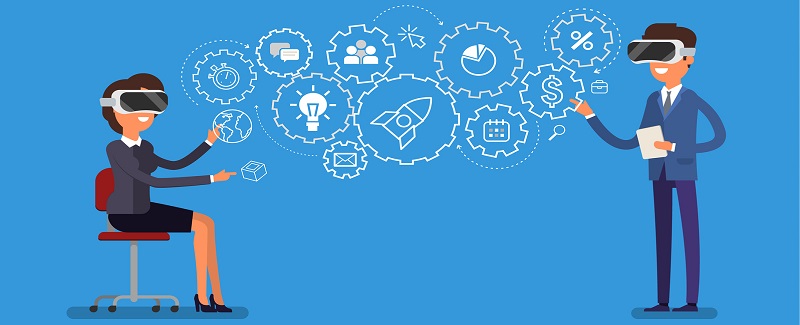
The Patient Self Determination Act will be effective on January 6, 2019, and according to this Act, anyone who wishes to sign an Advance Decision (to refuse a treatment) is required to complete ACP consulting process with the ACP team. In light of this, Chimei Medical Center has eliminated its previous communication process with patients, and decided to use an intelligent education tool by introducing touch screen games and virtual reality. As a result, the general public can experience the journey of life and learn to understand various aspects of medical, emergency and long-term care when one is at the end of the life stage. This will encourage patients to foresee and plan their medical choices when at the end of life, and also help the family to better relate to patients’ sentiments and decisions. This device is now functional along with the pilot scheme of Patients Self-Determination Act, and ready for the general public to experience.
The theme of this device is Autonomy and Dignity on the Life Journey, developed by team members of Chimei Medical Center. It offers two modes—one in cartoon and the other in virtual reality (“VR”)–to invite people to experience the journey from a newborn baby, to a teenager, to a middle-aged person, and finally, to a senior citizen. At different stages of life, people have different concerns related to their frailty, meaning, and medical care.
Realize, Rethink and Remodel
The first mode will be an interactive cartoon called Into the Time Tunnel, a Review of Life. It invites the viewer to experience life from a baby being blessed, to a teenager ready to fly high, to a middle-aged adult with great responsibilities, and finally, to a frail old man who requires care from others. This process points out the inevitable nature of being born and aging; and thus, the importance of Advance Directive. At the end of this interactive cartoon, the viewer can print out a personalized choice sheet as a souvenir.
 After this decision to celebrate World Hospice and Palliative Care Day was made, the board members and counsels of HFT formed a working group and started the selection of the film as they considered the values to be delivered, shooting techniques and screenplay to choose the films that would best represent our beliefs. These heroes behind the curtain were senior welfare film director Nien-tzu WANG, senior media personnel Shu-chuan LEE, former PTS Program Manager/ Assistant Prof. of NCCU Radio and Television Dept., Yae-wei WANG, and Hong Kong University, Head of Nursing School, Chia-chin Lin.
After this decision to celebrate World Hospice and Palliative Care Day was made, the board members and counsels of HFT formed a working group and started the selection of the film as they considered the values to be delivered, shooting techniques and screenplay to choose the films that would best represent our beliefs. These heroes behind the curtain were senior welfare film director Nien-tzu WANG, senior media personnel Shu-chuan LEE, former PTS Program Manager/ Assistant Prof. of NCCU Radio and Television Dept., Yae-wei WANG, and Hong Kong University, Head of Nursing School, Chia-chin Lin.
During this mode, we wish to achieve these three goals “RRR”:
- Realize one’s current stage of life and acknowledge one’s current feelings;
- Rethink the adage “Do to others as they do to you,” and offer the authenticity of advance medical to encourage people to do ACP so as to avoid the actual suffering;
- Remodel the general public’s view and understanding of palliative care and build up the value of life and dying well.
Experiencing medical care in virtual reality mode
The second mode is to experience medical care in different settings in the VR mode. These settings are:
- ER and Intensive Care Unit: Through VR technology, people experience what it is like to receive endotracheal intubation, electric shock, heart massage, under restraint and all relevant life maintaining devices. They are also introduced to palliative care and co-decision in a family meeting;
- Palliative and Hospice Ward: Participants experience the interaction among medical team members (e.g., physician, nurse, social worker, psychologist and so on) and comfort care (e.g., bathing, pedicure and Lymphatic massage).
The design purpose of these two modes is to allow participants to first experience the different stages of life along with its different values and anticipation through cartoons. When participants’ age and later need to make such medical choices, they can continue their experience by VR technology to further comprehend the medical situation when they are sick and old. With the introduction of palliative care planning, participants can also learn the differences of having family and the content of palliative care.
Cartoon and VR technology effectively change public’s expectations of EOL medical choices
Chimei Medical Center has also shown this device at Taiwan Healthcare Expo. Many participants said the device allows them to experience the warmth of palliative care, in contrast to the coldness of life sustaining treatments which cannot ease suffering but only prolongs the dying process. Participants showed significant willingness to accept palliative care and also sign relevant forms. The palliative and hospice ward director of Chimei Medical Center, Hsieh, said: “The purpose of this device is to assist the general public’s understanding more about medical options, and more importantly, to talk about one’s options with one’s family in advance, thus creating more time and space to make intelligent decisions.”
Based on the collected onsite findings, the percentage of people who do not wish to receive life-sustaining treatment at EOL rises after watching the VR video from 69% to 77%. The percentage shows that more than half of the general public is reluctant to receive life-sustaining treatment at EOL stage, but after watching the VR video, they become more willing to prepare in advance. Appropriately, this device will be a helpful consulting tool when people are seeking Advance Care Planning consultation in Chimei Medical Center.
